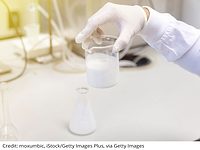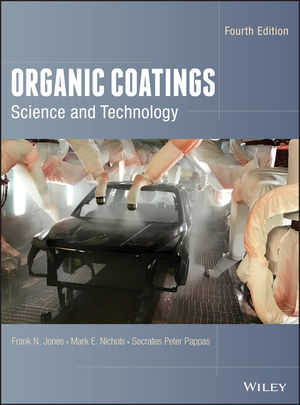Advanced Technologies for the Global Paint & Coatings Market
Exploring New Frontiers

Notable technological and material science advancements within paint and coatings are expanding market growth avenues for the overall industry. From formulation and application to performance and sustainability, the industry has evolved in every aspect. As a result, it continues to open promising prospects for expansion within architectural and industrial applications.
Emerging Technologies and Applications
The deployment of advanced technological capabilities aimed at enhancing product performance, sustainability and application efficiency has led to a remarkable transformation. Active paints — such as self-healing or self-cleaning variants — along with advanced tools, glow-in-the-dark paints and fast-drying coatings, are increasingly being used to elevate the aesthetics and functionality of coated surfaces. In addition, the trend of incorporating natural ingredients, nanocoatings and VOC-free additives into paint offers a safer alternative to conventional options while providing protection for both families and the environment.
Market Dynamics and Growth Factors
The global paint and coatings market is projected to grow from $194 billion in 2023 to $263.2 billion in 2029, at a compound annual growth rate (CAGR) of 5.2% during the forecast period. The primary market growth drivers include the automotive industry and architectural coatings.
The booming automotive industry is driving a surge in demand for paint and coatings, propelled by both market growth and cutting-edge innovations. Breakthroughs such as UV-curable coatings, additive manufacturing, e-coat systems, robotics, automation and electrochromic technologies are revolutionizing how automotive paint and coatings are used, enhancing both performance and efficiency.
However, the road ahead isn’t without challenges. Stricter environmental regulations aimed at reducing VOC emissions are putting pressure on manufacturers and suppliers to adapt. As the industry navigates these hurdles, the push for more sustainable and compliant solutions is reshaping the future of automotive paint and coatings.
Future Trends and Developments
The paint and coatings industry is on the brink of a transformative shift, as solvent-free coatings gain traction over their solvent-based counterparts. This growing trend is fueled by heightened consumer awareness and concerns over environmental degradation, prompting a demand for greener, more sustainable solutions.
Innovation driven by robust R&D efforts is turning solvent-free coatings from niche offerings into mainstream choices. Meanwhile, the market is also highlighting other eco-friendly advancements, including water-based alternatives, nanomaterials, smart coatings and UV-curable technologies.
Adding to the momentum, coatings derived from renewable resources — such as plant oils, bio-based resins and recycled materials — are gaining attention. Offering performance on par with traditional options but with a lighter ecological footprint, these green alternatives align with the industry's sustainability goals and the growing emphasis on resource conservation.
Regional Insights and Emerging Markets
Asia-Pacific, a dynamic hub for the paint and coatings industry, is the most significant contributor to global market demand. It is expected to grow at a CAGR of 6.0%, driven by industrialization, infrastructure development and urbanization. These factors fuel both production and demand for paints and coatings. Urbanization and construction activities in key emerging economies — including China, India and South Korea — are major catalysts for demand, spanning architectural, automotive and industrial coatings.
Europe, the second-largest revenue-generating region in the global market, is seeing promising demand for paint and coatings from residential, commercial and infrastructure projects. The region’s strong emphasis on environmental conservation is spurring a growing demand for eco-friendly coatings with low volatile organic compound content.
Segmental Analysis
In terms of technology, waterborne coatings hold the dominant market share and are projected to retain their lead during the forecast period. Waterborne coatings’ environmentally friendly and low-emission characteristics are driving increased adoption. They are widely used in architectural applications and are also gaining traction in industrial coatings. Additionally, the market outlook for emerging technologies — such as nanocoatings, vapor permeation technology and smart coatings — remains promising.
Conclusion
In today’s rapidly evolving industrial landscape, paint and coatings are more than just functional finishes — they are indispensable. As emerging manufacturing technologies and the growing demand for sustainability drive transformation across sectors, the paint and coatings market must evolve accordingly.
The future of this industry lies in embracing cutting-edge advancements while developing innovative formulations that meet stringent regulatory standards and consumer expectations. With a strong focus on eco-friendly solutions and high-performance applications, the market is poised to gain significant momentum in the years ahead.
By aligning with the changing priorities of modern industries, paint and coatings are set to remain a vital cornerstone of progress and innovation.
Browse More Related Reports
Looking for a reprint of this article?
From high-res PDFs to custom plaques, order your copy today!









